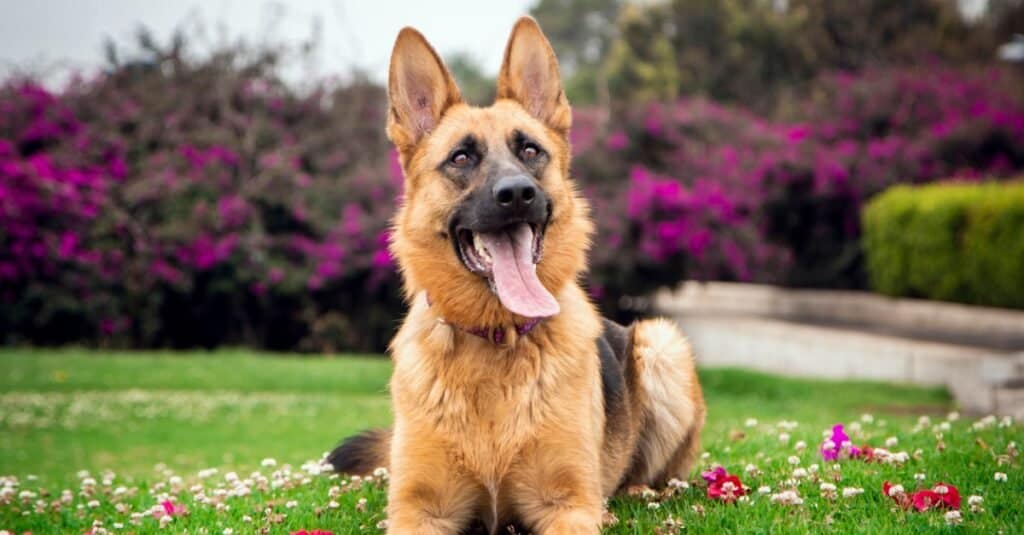
Effective Strategies for Managing Biting and Nipping in German Shepherds
Share
If you're a pet owner, you know firsthand the unmatched loyalty and intelligence of your German Shepherd. However, one of the common challenges many owners face is managing their biting and nipping behavior. While these behaviors are natural, they must be addressed to foster a peaceful relationship between you and your furry friend.
Controlling biting and nipping in German Shepherds is vital for both household safety and your dog's overall well-being. These behaviors can arise from various triggers, including teething, playful instincts, or even as a means of expressing excitement or distress. Understanding these triggers is your first step toward effective management.

What Drives German Shepherds to Bite and Nip?
Before exploring control methods, its crucial to grasp why your German Shepherd may indulge in biting or nipping. Often, such behaviors can be linked to their heritage as working dogs, originally bred for herding and protecting livestock. This natural instinct can show up as nipping, similar to how they would herd sheep.
In addition, German Shepherds are inherently playful, especially as puppies, who tend to explore everything with their mouths. This leads to increased nipping during their teething phase. It's important to recognize the distinction between playful nipping and aggressive biting, as each requires its own approach.
Playful Nipping vs. Aggressive Biting
You'll find playful nipping is common among young German Shepherds, and it typically comes across as gentle. This behavior often occurs during playtime and can invite further engagement. In contrast, aggressive biting tends to be more forceful and may stem from fear, anxiety, or a defense of territory.
For example, a German Shepherd might exhibit aggressive biting if they feel threatened or if they perceive someone unfamiliar as a danger. Recognizing these differences is essential for addressing them effectively.
How to Control Biting and Nipping
Once you've pinpointed the type of biting behavior your German Shepherd displays, there are several techniques you can implement to manage and mitigate it. Consistency and patience are pivotal in any training regimen.
1. Positive Reinforcement
Utilizing positive reinforcement is one of the most successful strategies for managing biting and nipping. Reward your dog with treats or praise whenever they choose not to nip. This method helps them associate good behavior with positive experiences.
2. Socialization
Exposing your German Shepherd to various people and situations from a young age can significantly lessen nipping and biting. Socialization aids in minimizing fear-induced aggression. It teaches your dog to remain calm in different environments, which is crucial for their development. For further tips on this subject, check out our socialization guide.
3. Obedience Training
Obedience training forms another critical component in tackling nipping behavior. Commands such as sit, stay, and leave it can redirect your dog's focus away from biting. Regular training sessions reinforce discipline and offer control. You can learn more about effective obedience techniques in our post on obedience training.
4. Appropriate Chew Toys
Puppies often nip due to discomfort from teething. Providing a variety of safe chew toys can help soothe their gums and deter them from nibbling on household items. Be sure to select toys suitable for your dog's size.
The Importance of Consistency
Consistency in training and responses to your German Shepherd's behaviors is paramount. Mixed signals can lead to confusion and exacerbate the biting problem. Always use consistent commands and maintain a calm approach during training sessions.
For additional information on German Shepherds and their behaviors, you can visit the Rover blog.
When to Seek Professional Help
If your attempts to manage biting and nipping aren't yielding the results you hoped for, it may be time to consult a professional. Experienced dog trainers specializing in behavior issues can offer tailored advice and actionable strategies.
In certain cases, a visit to the veterinarian might be necessary to determine if any underlying health concerns are contributing to aggressive behaviors. A well-informed pet owner understands that a dog's actions can often reflect their physical and emotional state.
Conclusion
Successfully managing biting and nipping in German Shepherds is a journey that requires time, understanding, and patience. By employing positive reinforcement, socialization, and obedience training, you can help build a safe and loving environment for both your dog and your family.
Every German Shepherd is unique, so what proves effective for one may not suit another. Remember to be patient and celebrate the small successes along the way.

FAQs
At what age should I start training my German Shepherd to stop nipping?
It's best to begin training during their puppy stage, around 8-12 weeks old. Early interventions help cultivate good habits.
Are there specific toys that can assist with nipping?
Absolutely! Numerous chew toys are specifically designed for teething puppies. They can help soothe sore gums and deter destructive chewing.
When should I consider consulting a professional trainer?
If you notice persistent aggressive biting or your training strategies arent producing results, its wise to reach out to a professional trainer for assistance.
This article contains affiliate links. We may earn a commission at no extra cost to you.
